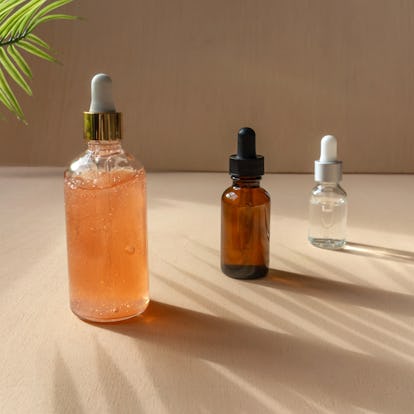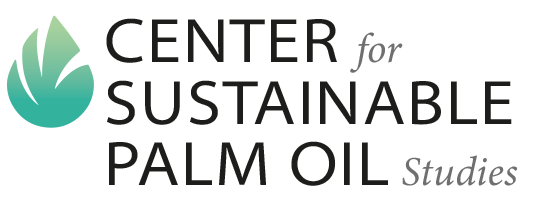
Do you know where your face cream comes from?
What if your eyeshadow contained an ingredient mined using child labor? Or your shampoo was contributing to the destruction of natural habitats? Or your body oil was threatening vulnerable species? The clean beauty movement has created a culture that is so hung up on what’s not in products, that no one stops to really understand what is actually in products. But tracing beauty ingredient sources to learn what is inside your favorite products (and how exactly they got there) is the logical next phase of the clean beauty revolution.
Unfortunately, the so-called “natural” ingredients consumers have come to covet can have negative implications, and a “clean” product can easily be rendered problematic via ecological harm and unethical practices linked to its ingredient sourcing.
Consumers are wising up, armed with more knowledge and demanding more from their favorite beauty brands. Not only do they require that the ingredients they are putting on their skin be clinically safe, but they want to know where they came from. It’s no longer adequate to claim that products are safe, clean, and sustainable; brands need to prove it. It’s time for transparency in beauty, and it starts with brands taking a good, hard look at their supply chain, and mapping ingredients from farm to face.
Ingredient traceability is paving the way to the future of beauty, and brands are seeing it as an opportunity to build stronger relationships with consumers. Here’s how they are going about it.
Tracing Ingredient Sources: Products Aren’t Sustainable Without It
According to Lorraine Dallmeier, a biologist, Chartered Environmentalist, and CEO of organic cosmetic formulation school Formula Botanica, the first pillar of sustainability in beauty is the need to look at ingredient provenance. “Every beauty brand should know exactly where their ingredients came from if they are truly serious about sustainability,” says Dallmeier. Without this visibility, brands don’t know how ingredients were grown, harvested, processed, treated or shipped. In fact, not knowing could mean the difference between creating a beauty product that is sustainable and creating a beauty product that causes harm.
Brands like Circumference, which has sustainability and ethical production at their core, believe that building a sustainable brand isn’t just about what’s on the label, but rather the where and how of their ingredients. “We continually invest our efforts into building up and bolstering our own supply chain, sourcing our own ingredients and partnering with key extraction labs and formulators that allows us to have full visibility into every layer of our production cycle,” says Jina Kim, Founder and CEO of Circumference. “Consumers are increasingly wanting to understand the difference between harmful, commercial cash-crop ingredients like palm oil, coconut oil, and cheap fractionated oils versus healthy, nutrient-filled extractions, and oils.”
Tracing Ingredient Sources: Ingredients That Spell Trouble
Mica
You know that strategically placed highlight that makes your cheekbones pop, or the eyeshadow that makes your eyes look impossibly blue? Well you can thank mica for that, but sourcing it can come at a cost. The Bureau of International Labor Affairs has identified 155 products from 77 countries which are believed to be produced by child labor or forced labor in violation of international standards, and among them is mica. Beautycounter has worked hard to build a responsible sourcing program to continually address high-risk ingredients. “The human rights abuses in the mica supply chain, like child labor and forced labor, are widely known,” says Lindsay Dahl, SVP of Social Mission at Beautycounter. “At Beautycounter, it’s incredibly important that we create ethical supply chains that aim to protect people working to source high-risk raw materials,” she adds.
Essential Oils
According to Dallmeier, another ingredient posing significant sustainability challenges are essential oils, as they generally require the biggest land footprint for the smallest yield. She cautions that essential oils should be used sparingly, but “unfortunately, the giant boom in essential oil network marketing has driven consumption through the roof,” she says. Many of these ingredients are also slow growing, which makes them particularly problematic from a sustainability perspective. The way in which some of these ingredients are harvested can also exacerbate the problem, such as with frankincense, which involves tapping Boswellia trees and can be very damaging. Dallmeier points out that to keep up with demand, the extraction process is happening much more frequently than it should be, and the trees are being overexploited.
Palm Oil
Palm oil is used in over 70% of all cosmetics on the market, and according to the IUCN it affects at least 193 threatened species around the world. “The irony is that palm oil is a highly efficient crop, requiring fewer pesticides than other oil crops, has a low water footprint, and provides high yields of oil compared to other botanical oils such as sunflower and coconut,” says Dallmeier. “The issue with palm oil is our out-of-control consumption of this ingredient for the food, fuel and cosmetics sectors, which is only set to increase significantly in the coming decades,” she adds.
Almond Oil
Almond oil is slowly growing in popularity as a beauty product ingredient, but the challenge with almonds is that they depend on bees to grow. “Eighty percent of the world’s almonds come from California, and because native pollinators cannot fulfill the demands of the almond growing industry, beekeepers ship in their bees,” notes Dallmeier. A recent survey of commercial beekeepers showed that 50 billion (yes, billion) bees were wiped out in a few months during the winter of 2018-2019. This mass die-off was attributed to pesticide exposure, diseases from parasites, habitat loss, and a reliance on industrial agricultural methods.
Tracing Ingredient Sources: Leveraging Technology
The majority of beauty companies have too many suppliers in their extended supply chain to know them all. However, in today’s digital age, brands are turning to technology to help them get a handle on better tracing.
Organizations like Sourcemap exist to help brands with every aspect of their supply chain sustainability, from tracing certified raw materials to paying workers fair wages, and ensuring that safe, ethical practices are in place every step of the way. “Technology has caught up, and it’s now possible for a brand to map every single one of its ingredients, verify they are produced responsibly, and share that information with consumers transparently,” says Dr. Leonardo Bonanni, Founder and CEO of Sourcemap.
Using their Responsible Mica Platform, Sourcemap was an integral partner in helping Beautycounter in their efforts to trace mica and verify it is produced in ethical conditions. It works by identifying and locating every facility and mine used in the mica supply chain, benchmarking suppliers, assessing risk through third-party data, and reporting on the origins of every shipment of mica product. In the case of palm oil, Dr. Bonanni points out that there are hundreds of thousands of palm oil plantations, with many levels of intermediaries separating consumers from the forests at risk. “But with the introduction of supply chain mapping, companies can know exactly which plantations they buy from,” says Dr. Bonanni. “Combine that with satellite imagery, and you can be sure that the palm oil you buy is sourced without deforestation,” he adds.
Dallmeier adds that by having access to this technology, shoppers and retailers can verify that the claims made by brands are actually true (usually by checking a brand’s website for their complete sourcing information). “All of a sudden, a beauty brand’s environmental impact and social impact, as well as their animal welfare, packaging, and quality claims can be scrutinized and challenged,” she adds.
Brands such as holistic skin care line Apoterra, driven by a desire for total transparency, are making it even easier for customers to access this sourcing data. They implemented their batch numbering system in 2015, allowing consumers visibility into detailed information on when the product was made, where each ingredient was sourced, and which organization certified it. “My dream is to make this system more interactive and include more information about our producers so that our customers can be connected with the farms, distillers, and producers we work with,” says Dominique Caron, Founder of Apoterra.
Dallmeier sees many smaller brands and formulators spending years getting to know and building relationships with their suppliers, visiting their fields and facilities and building an intimate connection with the ingredients they source — an initiative that will hopefully increase among larger beauty conglomerates as well.

Tracing Ingredient Sources: Transparency As A Competitive Advantage
A recent survey found that 73% of respondents viewed traceability of products as being very important to them, and of those respondents, 71% said they would pay a premium for it. Additionally, when consumers choose a product with sustainability in mind, 84% say brand trust is important, and that they are looking to brands to demonstrate the attributes they seek. The survey goes on to reveal that regardless of how much consumers trust a brand, they will conduct substantial amounts of research prior to making purchases. There’s no question that there is an imperative for brands to embrace ingredient transparency if they want to reach consumers. It’s no longer a “nice to have” — it is a “need to have.”
“Trust is a brand’s most valuable asset,” says Dr. Bonanni. “And the internet has made it possible to be infinitely more transparent when it comes to consumers. It’s time for brands to take advantage of supply chain transparency to build stronger, more long-lasting relationships with consumers,” he adds. With technology helping brands achieve transparent supply chains, Bonanni is confident there will be a lot more transparency in the beauty industry in the near future, which is better for beauty consumers and ultimately the planet.
In Dr. Bonanni’s view, clean beauty has made one thing clear: “That consumers have a right to know what they’re buying, that it’s good for their bodies, for the environment, and for the communities that produce it,” he says. “And there’s only one way to make certain that beauty products are sustainably made, and that’s through 100% traceable and transparent supply chains.”
By Victoria Malloy
Original Link: https://www.thezoereport.com/beauty/tracing-beauty-ingredient-sources-is-the-future-of-clean-beauty


